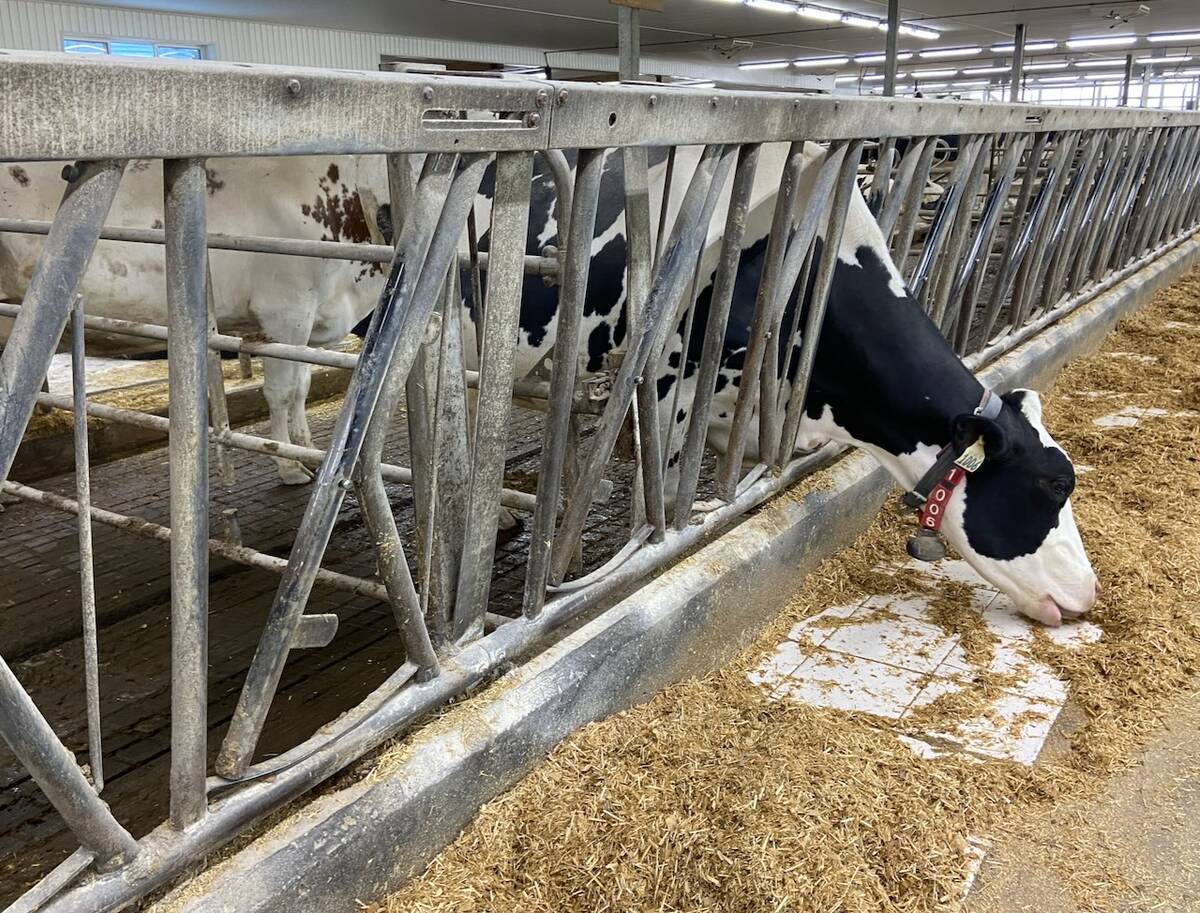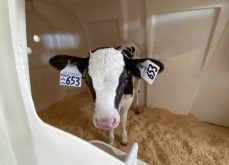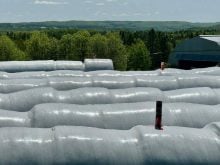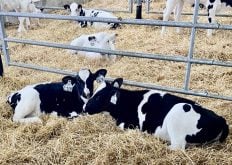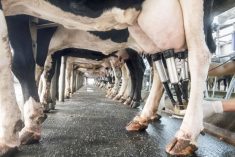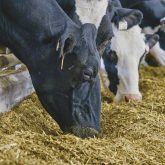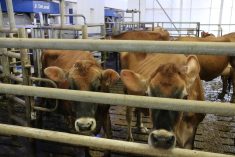Early abnormal inflammation detection in dairy cows could lead to better avoidance of disease after they calve.
Cornell University specialists have developed a simple test that can assess inflammation in dairy herds.
Why it matters: Once inflammation is significant enough to cause disease, farmers are already losing money.
“We want to be able to detect inflammation before we even have a disease diagnosis,” says Dr. Sabinne Mann, a Cornell researcher who began work on a testing protocol seven years ago.
Read Also
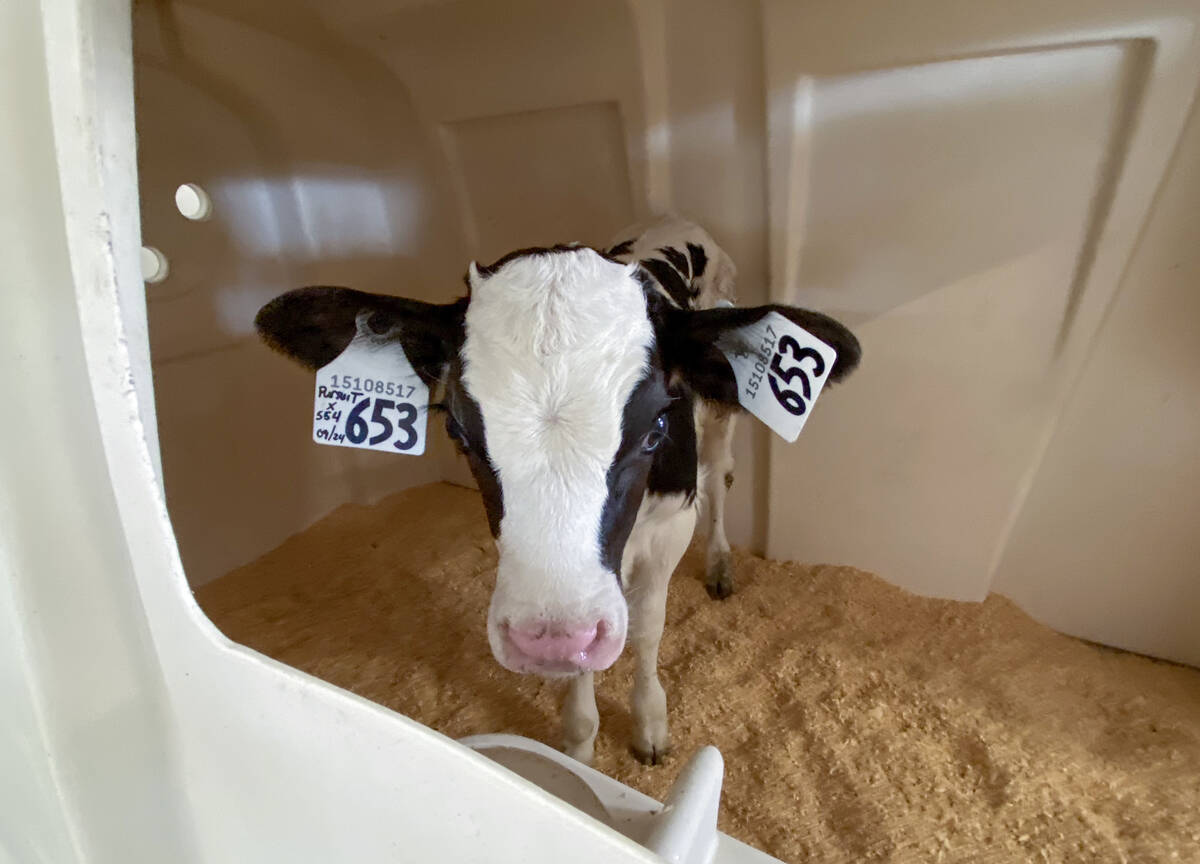
Lactanet turns methane expertise into business opportunity
Lactanet’s new fee-for-service breeding tool initiative to reduce greenhouse gas emissions in Canadian and Swiss Holstein herds will launch in April 2026.
Post-partum inflammation typically occurs due to either mastitis in the mammary glands or metritis in the uterus.
Calving in inherently inflammatory, says Dr. Stephen LeBlanc, a professor in the University of Guelph’s Department of Population Medicine. Some degree of inflammation is necessary for successful calving.
During the post-calving period, inflammation is a natural byproduct of the physiological processes (such as tissue repair) that unfold in the cow.
That means that inflammation is a “chicken and egg” discussion, says LeBlanc, about whether the inflammation is causing discomfort in the cow or the discomfort from calving and other issues is causing inflammation to be worse.
Problems can develop, though, when the inflammation is greater than what should happen naturally or if the inflammation persists longer than what is expected naturally.
Reducing inflammation could increase milk production slightly
LeBlanc says researchers in the early 2000s, mainly in the U.S., looked at giving seemingly healthy cows anti-inflammatory injections for three days immediately post-partum. Surprisingly to many of those researchers, repeated studies revealed that over the duration of the lactation, cows that received anti-inflammatories produced an average of two more days’ worth of milk than those that didn’t receive injections.
There’s no good understanding of why that happens. But those studies did indicate that treatment of otherwise healthy cows within one to three days immediately post-partum was more effective concerning lactation-long milk production compared to treatment at any other time before or after calving.
There is some knowledge, says LeBlanc, about which cows are more susceptible. Obvious identifiers include cows with observable post-partum conditions, such as lameness or failure of the uterus to clean.
It’s clear as well that cows with a body condition score of greater than 3.75 (over-conditioned cows) are more susceptible. Virtually all cows experience reduced feed intake leading up to and following calving; the natural outcome is the mobilization of fat cells from within the body to replace that feed intake. When that happens, those fat cells secrete hormones that mediate inflammation.
In cows that are fatter than desired leading into calving, this fat mobilization happens to a greater degree than in average or below-average cows. Inflammation, therefore, is on average also higher among cows with higher body condition.
The announcement coming out of Cornell last week, LeBlanc explained, is part of an effort to positively identify which cows have a greater tendency to suffer either elevated inflammation or long-lasting inflammation after calving.
Inflammation research typically uses acute-phase proteins as markers for identifying at-risk animals. These are typically produced by the liver within a day of the animal experiencing any type of inflammation and typically remain active in the body for one to three days after production.
The most common one used in dairy research is haptoglobin.
Currently, there are no on-farm test protocols available for haptoglobin in dairy. “It’s one of those things where you’ve got to take a blood sample, ship it off to the diagnostic lab and wait for the results,” LeBlanc explained. “Even the vet clinic can’t do a quick test at this point.”
Cornell says the still-under-development testing protocol is not yet available to veterinarians, but that is the researchers’ ultimate goal.
For now, they are offering the tests to their colleagues for clinical research, and they’re trying to identify which inflammatory markers are associated with outcomes that matter to dairy farmers.
LeBlanc says other North American researchers are looking at the reasons why cows might be more likely to suffer elevated or long-lasting inflammation. Some are examining those in the close-up dry period that are exposed to increased temperature stress, socializing stress due to being moved from group to group, or changes in feed.
And further back in the dry period, some researchers are looking at cows that struggle to recover from the inflammation that occurs at dry-off from the previous lactation.
“Those are all plausible hypotheses (for why some cows may be more susceptible to post-partum inflammation), although none of them have super compelling data to back them up at this point,” LeBlanc commented.
Guelph studies
LeBlanc has been involved with two recent studies at the University of Guelph’s Elora dairy research barn. One aimed to replicate the reduced feed intake that cows experience immediately leading up to calving by instead cutting back feed by 40 per cent two weeks before the calving date. Anti-inflammatory drugs were given to half of the cows to determine if those receiving treatment had better outcomes after calving.
Results were inconclusive, however, because the reduced feed intake several days ahead of when it would have occurred naturally did not have the desired effect of causing inflammation hormones to increase due to fat mobilization.
“That’s why you do studies,” LeBlanc said. “Because sometimes things don’t go the way you expect.”
His team followed up with a study of the use of the anti-inflammatory drug meloxicam on seemingly healthy post-partum cows. That study determined the treatment decreased the presence of hormonal inflammatory markers but did not noticeably affect the naturally occurring inflammation of the uterus in those otherwise healthy cows.
LeBlanc’s colleague at the Dairy at Guelph centre of excellence, Dr. Eduardo Ribeiro, meanwhile, is currently overseeing a study of 708 cows from two commercial herds in Ontario. In that work, cows beginning at three weeks before calving and running through five weeks post calving are being examined for clinical health disorders, including difficult calving, retained placenta, metritis, displaced abomasum, mastitis and lameness.
LeBlanc stresses that prevention should remain the most important consideration of research. Exploring factors during the dry period, he believes, offers the biggest promise for mitigating the effects of inflammation on dairy farms over the long term.




